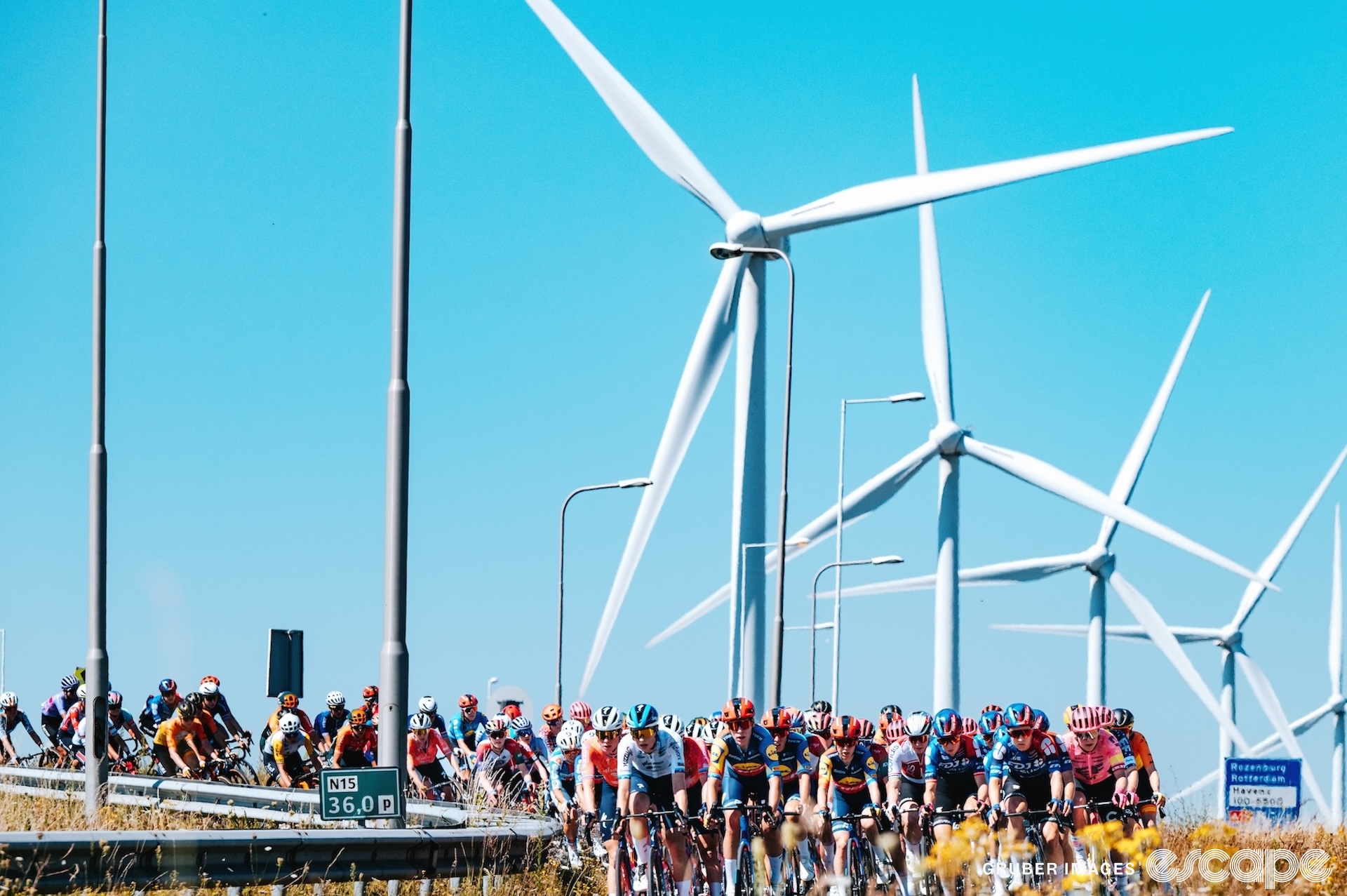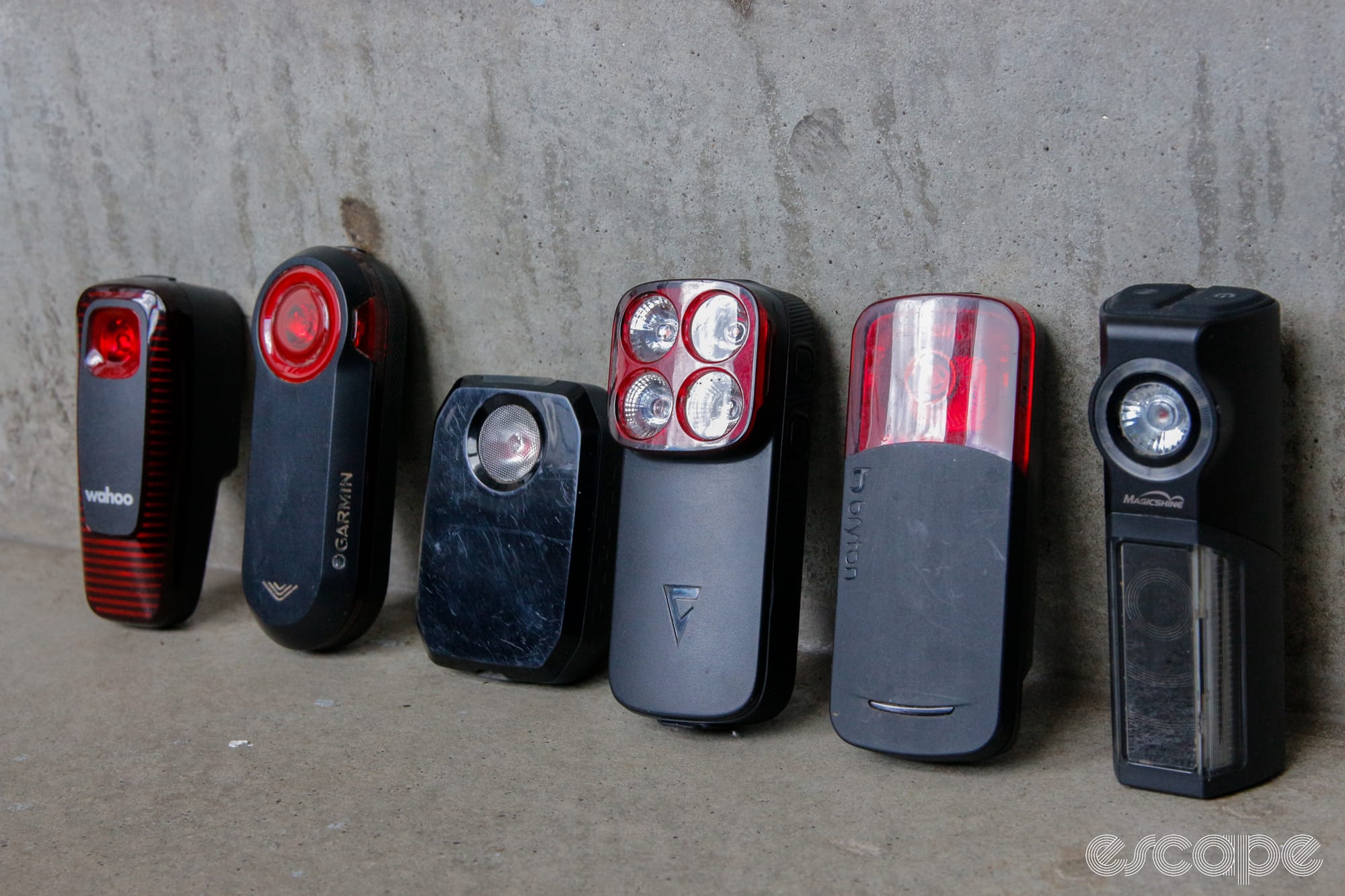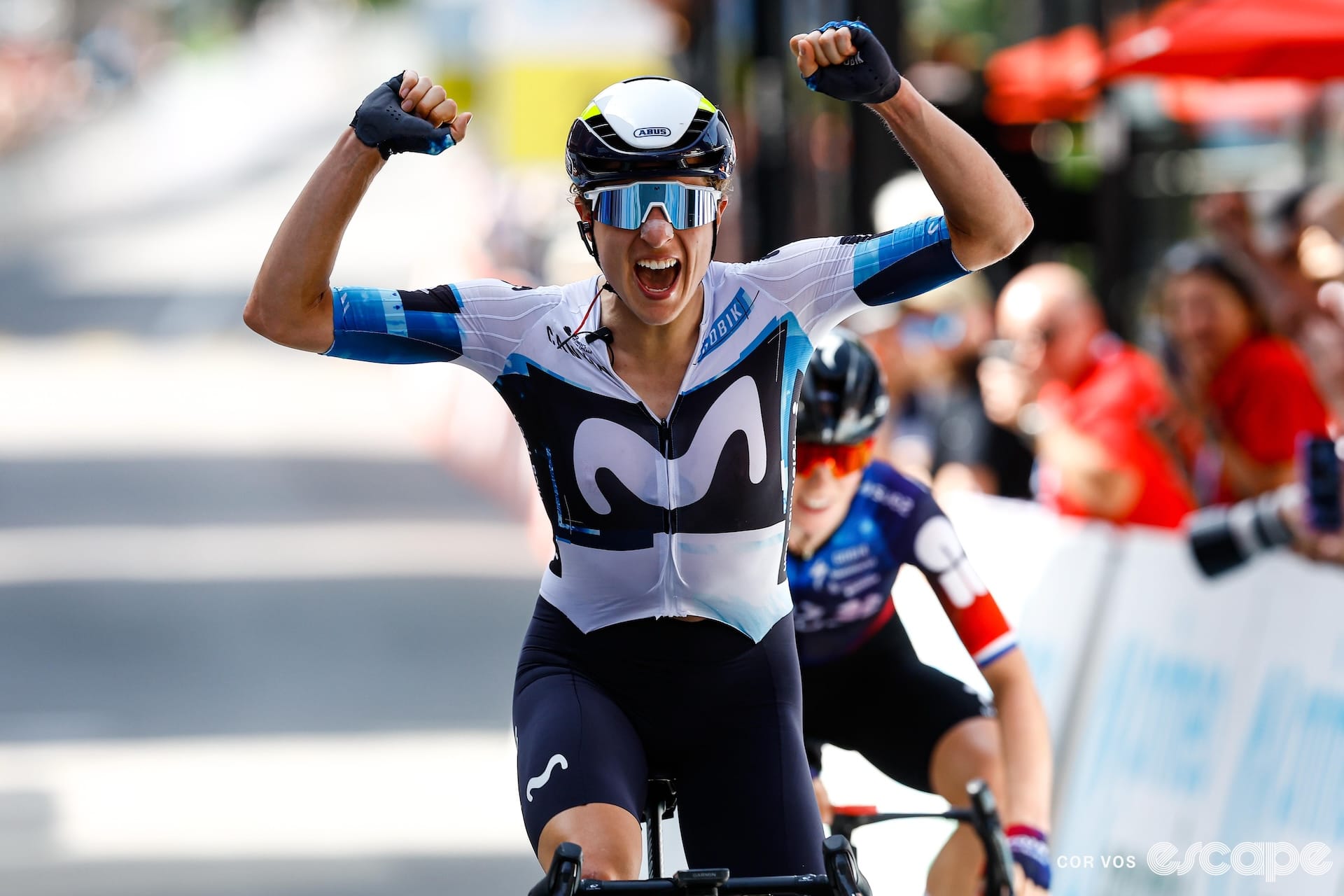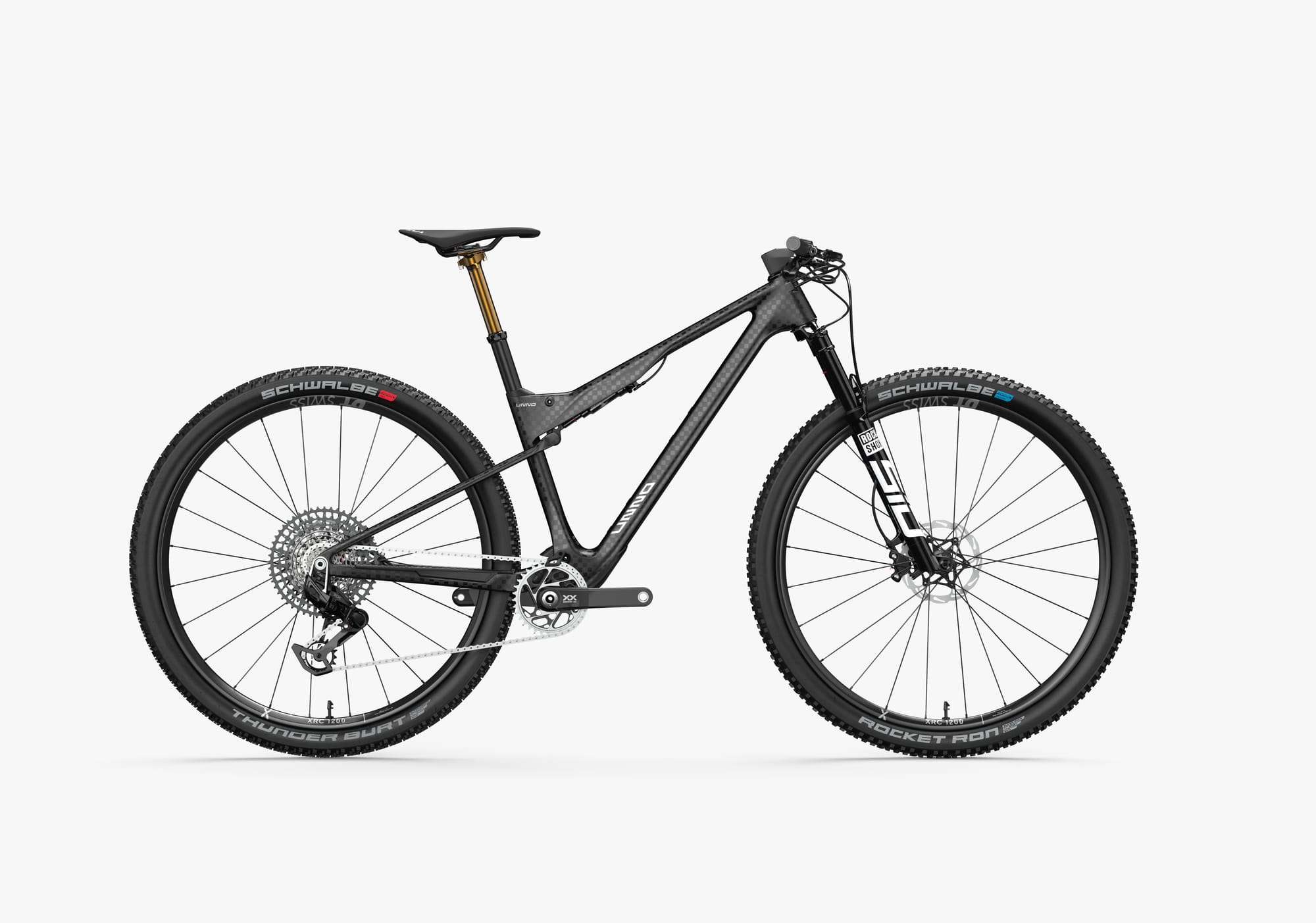The Tour de France Femmes avec Zwift is underway, and although on paper the long and mountainous stages to Le Grand Bornand and Alpe d’Huez should decide the race, the flat and short stages 2 and 3 could prove the most stressful for riders and staff alike. That’s because both are on the same day as the TdFF includes a split day featuring a 69 km morning road stage and a 6.3 km afternoon city-centre time trial.
It may seem surprising that every rider we spoke with was unhappy about the inclusion of two very short and pan-flat stages, but it's the combination of both on a single day at the biggest race of the year that creates a major issue for riders and staff alike.
At 69.7 km with only 135 metres total elevation gain, the morning stage looks like a walk in the park, but long sections take place in hectic urban environs, and with a route taking the riders from Dordrecht to Rotterdam in South Holland, there is always the chance of wind and echelons ripping the peloton to pieces. Add to that a time trial – typically the busiest and most stressful of days for team staff in normal circumstances – in the afternoon through Rotterdam city centre with forecasters currently predicting thunderstorms and a 55% chance of rain, and combining the two simple stages on paper could make for one of the most mentally stressful days of any men's or women's Tour in recent memory.
While split days are common in the lower racing ranks, they have long since disappeared from the Men’s and Women’s WorldTours. In fact, it seems UCI regulation 2.6.010 explicitly prohibits half stages at WorldTour races. As reported by Escape Collective, the Tour de France Femme organisers had received special dispensation to include a split-day road race and time trial.
Regardless, while once a common feature, double days have become increasingly rare at the top levels of professional cycling primarily due to logistical, safety, and rider welfare considerations, especially with regard to managing fatigue over long-stage races and ensuring recovery between stages.
That said, split stages are still permitted in the lower ranks and do occasionally occur, as seen in the recent Baloise Tour. The decision to include split stages at these levels is typically at the discretion of the race organisers but must still adhere to general UCI regulations on stage race formats.
The most stressful of days
Why the Tour de France Femme includes a split is a separate discussion covered in the above-linked piece; here, we will look into how the teams will manage the extra demands on logistics, performance management, nutrition, equipment, and general stress the riders will have to deal with. What strategies will teams employ to ensure their GC and stage-favourite riders can perform at their best across two stages just three hours apart?
"So what?" you might be thinking. "It’s the same for everyone." And it is, but that’s far from a guarantee everyone will come out of the split day the same. The make-up of the two stages and the resources some teams can employ to maximise performance, or perhaps more accurately minimise disruption, will almost certainly mean the results sheet post-stage 3 will feature some who have lost much more than others through no fault of their own.
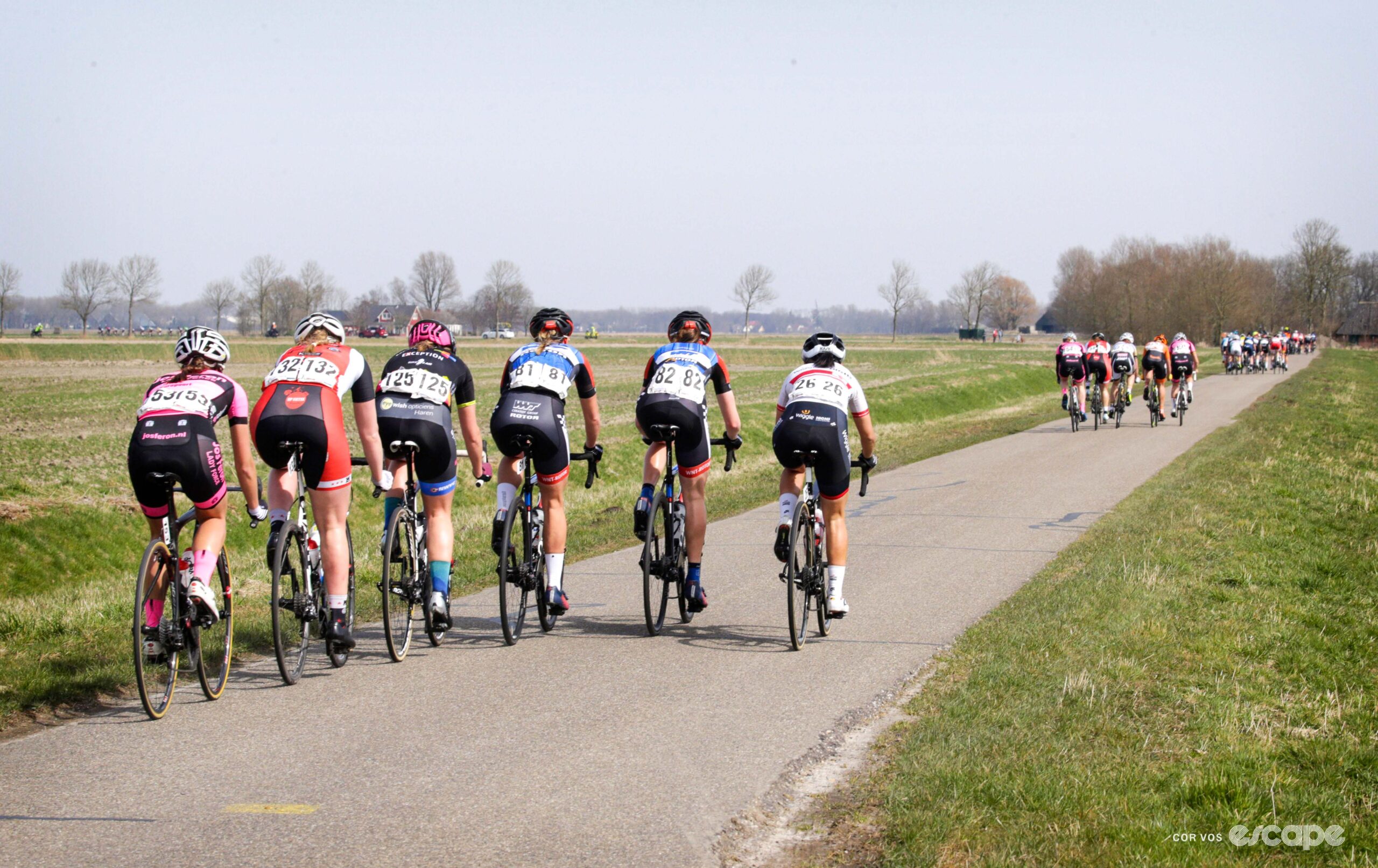
To consider how busy day two of the TdFF will be, again remember that either of these stages on their own would make for a busy and stressful day. A flat, twisty, early race stage of any Grand Tour through the flatlands of South Holland always carries its own stress and risks where race-defining echelons are always a threat and narrow roads with their fair share of street furniture mean riders are always fighting to be at the front. These are the days Grand Tour hopefuls fear the most and the days they simply want to get through.
The other stages GC riders most want to “just get through” are opening prologue time trials. Even if time trials can decide an overall, the short, fast, high-intensity, and usually flat and technical city-centre courses prologues most often feature are not the domain for winning a Grand Tour. “Just getting through” is more stressful than it sounds; GC riders must either limit their losses or grab small advantages on terrain that often doesn’t suit them and typically carries increased risks. That said, at least prologues are day one of a race and the only stage happening that day. Riders are probably staying nearby and have the days and hours prior to the start to get ready, do a recon ride, and relax.
Stage 3 of this year’s TDFF wouldn't technically qualify as a prologue even if it had opened the race, as per UCI regulations which limit women's prologues to just 4km. But it still features all the negative aspects of the format without the positives with the technical course, weather threat, and just one hour to do recon thanks to the road stage earlier that morning.
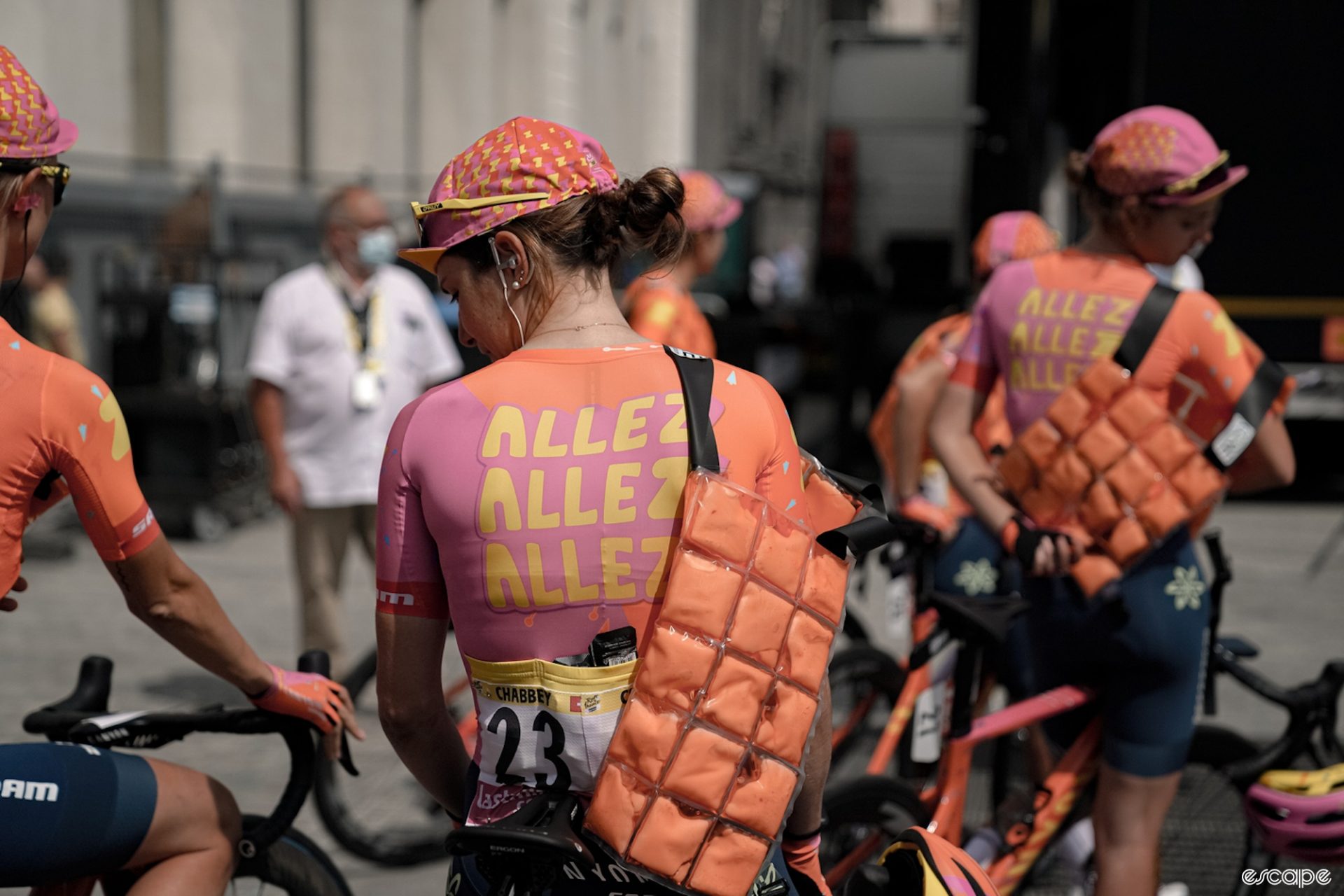
Logistics
All that considered, it’s hardly surprising day two of this year’s Tour is proving a logistical nightmare for teams. Typically, staff will tell you there are not enough hours in the day on Tour time trial day, and road stage days aren’t much easier. This year, we have both in a single day.
The main challenge for day two of the TdFF is the proximity between the end of the morning stage and the first rider starting the time trial. According to the official road book, the winner of the morning stage should finish between 11:35 and 11:44 (CET) on the fastest and slowest schedules, respectively.
On the face of it, that 11:44 finishing time still leaves almost three and a half hourse between stages, but keep in mind that's the winner’s time, and the last rider to finish on the stage could be up to 12 minutes further back with the 12% time limit in force for stage 2.
Given the last rider on the stage may well also be last on GC (or at least close to it), and that the organisers will use the reverse of the GC standings after stage two as the starting order for the time trial (again, as per UCI regulation), and the interval is that little bit shorter again.
Factor in that many riders will want to avail of a recon ride on the TT course, which, due to the morning stage and the city centre location, is only available between 14:00 and 15:00 – or in other words an hour before the time trial kicks off, and the timing gets even tighter.
That recon time slot also directly overlaps with exactly the time many of the early starters should be doing their TT-specific warm-ups on the stationary trainer and is far from perfect timing in its proximity to when the other riders will want to do their warm-up. All told, while officially day two is a double-stage day, riders could end up with four or five individual rides: stage 2 in the morning, a TT recon ride, a warm-up specific ride, the time trial, and a cool down. That’s not even counting a pre or post-road stage warm-up or, more specifically, the cool-down, which Sarah Roy of Cofidis told Escape Collective will be as much as 30 minutes after the short, intense effort on stage 2.
There seemed to be some confusion on how exactly the organisers would determine the time trial start times. Some teams Escape Collective spoke to had initially understood the organisers would adopt a time trial start order similar to that seen in prologues or stage 1 time trials, where the starting order rotates through a rider from each team and riders would know their start time well in advance, possibly the day before.
Adopting a reverse GC approach based on the results following the morning stage will introduce some delay in communicating start times and thus leaves an element up in the air of each rider’s exact post-road stage and pre-TT stage plans.
Typically a time trial schedule works backwards from a rider's start time. Riders must be at the start ramp 15 minutes before they're off. They’ll need several minutes to get there from the team bus, and there will be a few more between finishing their warm-up and setting off. The warm-up might require 20 minutes.
Everything before that revolves around their warm-up, which, as we just touched on, revolves around the start time, right down to the rider’s journey from the hotel to the team bus in the start village, their pre-race meal, etc. There are also the two UCI jig checks each bike must pass, one earlier in the day the mechanics will take all bikes to, and one in that 15-minute window when the riders present to the start house.
All this is usually laid out for the riders in an individualised schedule sent to them the night before a time trial. But with the start times unknown until at least three hours before the TT starts, teams will have to plan in generalities.
With thunderstorms and a 55% chance of rain, there is also the slight chance some teams or specialists may get strategic with finishing positions should stage two finish in a bunch sprint. Of course, losing time to start earlier is the easiest option, but losing time is simply not an option for GC contenders.
That said, with over two and half hours between the first rider off and the last and those storms forecast for the afternoon, there could be a benefit to starting earlier or later, which means whether a rider rolls across the finish line on stage 2 near the front or the rear of the peloton could make for an hour or two of difference in start time. It’s an unlikely and risky tactic, but nevertheless, it could prove pivotal if some riders get clear conditions while others get rain.
Again, it seems the same for everyone, but for some teams staying in Rotterdam, it’s slightly easier. The team can maintain camp from the previous night's accommodation, and riders can roll to the start area for recon and warm-ups from the hotel. For others staying further afield, this adds an extra logistical puzzle to solve, with at least one team hiring a hotel room in Rotterdam specifically to give riders somewhere to relax between stages. Others are planning to hang out in the team bus to wait the time out.

Nutrition
Perhaps the biggest question arising from an unknown start time is what to eat and when after the road stage. Stephen Gallagher, Canyon’s SRAM’s head of performance, gave us a unique insight into the team's preparations for the Tour's split day to the Performance Process podcast episode last week on the demands and benefits of double-session training days last week.
Gallagher was also keen to stress the double day comes on day two of a seven-day stage race. As such, teams and riders must optimise nutrition not just for performance on the day itself but also to ensure performance in the following days. Getting it wrong on a double day could result in consequences unseen for days to come and only exposed on those critical high mountain stages later in the week.
The morning stage element of the nutritional plan is the easy bit. Pre and mid-ride fuelling for a road stage or 100-minute ride are, pardon the pun, these riders' and teams' bread and butter these days. That said, they may benefit from increasing their caloric intake prior to stage 2 compared to what they might otherwise have done for a single stage day.
Again, that interim period between stages could prove more challenging to get right. We asked Tim Podlocar, lead nutritionist at Red Bull-Bora-Hansgrohe and guest on the Performance Process episode investigating why riders are now relying on increased carbohydrate intakes and the benefits of doing so, what might be the best post-road stage and pre-TT stage nutritional strategy.
The answer? Exactly how riders should balance the recovery requirements following a road stage with the fuelling requirements for a full gas time trial is not exactly straightforward and is highly dependent again on whether they are starting earlier or later in the time trial.
Luckily, neither stage is particularly long (possibly because there weren’t enough hours in the day to have either made any longer) and so riders won’t be as depleted following either. Nevertheless, getting either recovery or fuelling wrong could impact the TT for those targeting a result there or, as already mentioned, put the riders in an energy debt that could prove impossible to reverse during one of the most difficult stage races on the calendar.
Podlogar suggests the solution between stages is almost as simple as carbs, carbs, and more carbs with a focus on “simple carbs and plenty of fructose.”
That said, he also pointed out that rehydration will be key, especially given the very hot conditions forecasted, and normal recovery post-stage with a recovery drink rich in both carbohydrates and protein is also essential.
That protein will aid with recovery, but it should also help with glycogen storage. From there, Podlogar would have the riders ingest some carbohydrates such as rice. But rather than getting all their fuel from one single pre-TT meal, he’d have the riders prolong a high intake, aiming for 3-4 grams of carbohydrate per kilogram of body weight over the three hours before their start time through simple sources such as energy bars. He’d also have riders continue this high intake right up to their start time with a gel just before they start off.
Podlogar suggests the key here is multiple smaller portions rather than one large portion, for several reasons. Primarily, many riders might find it difficult to eat a large carbohydrate-based meal immediately after an intense stage. But equally, smaller and more frequent portions may help avoid a scenario where riders feel full and bloated going to the start of a short, intense time trial, and these simple carb sources now typically offer both glucose and fructose, which, along with being easier and more quickly digested than pasta or rice, should mean better glycogen uptake in preparation for the time trial.
Of course, the accumulative fatigue and physical stress of the two shorter stages, warm-ups and cool-downs, is unlikely to match that of the harder single-stage race days these riders are used to, and so post-TT recovery is unlikely to differ all that much. But, once again, this is day two of seven and riders will be mindful of the days to come. Perhaps the biggest challenge post-stage will be what time the riders get into the new accommodation, get their massage, and get to dinner.
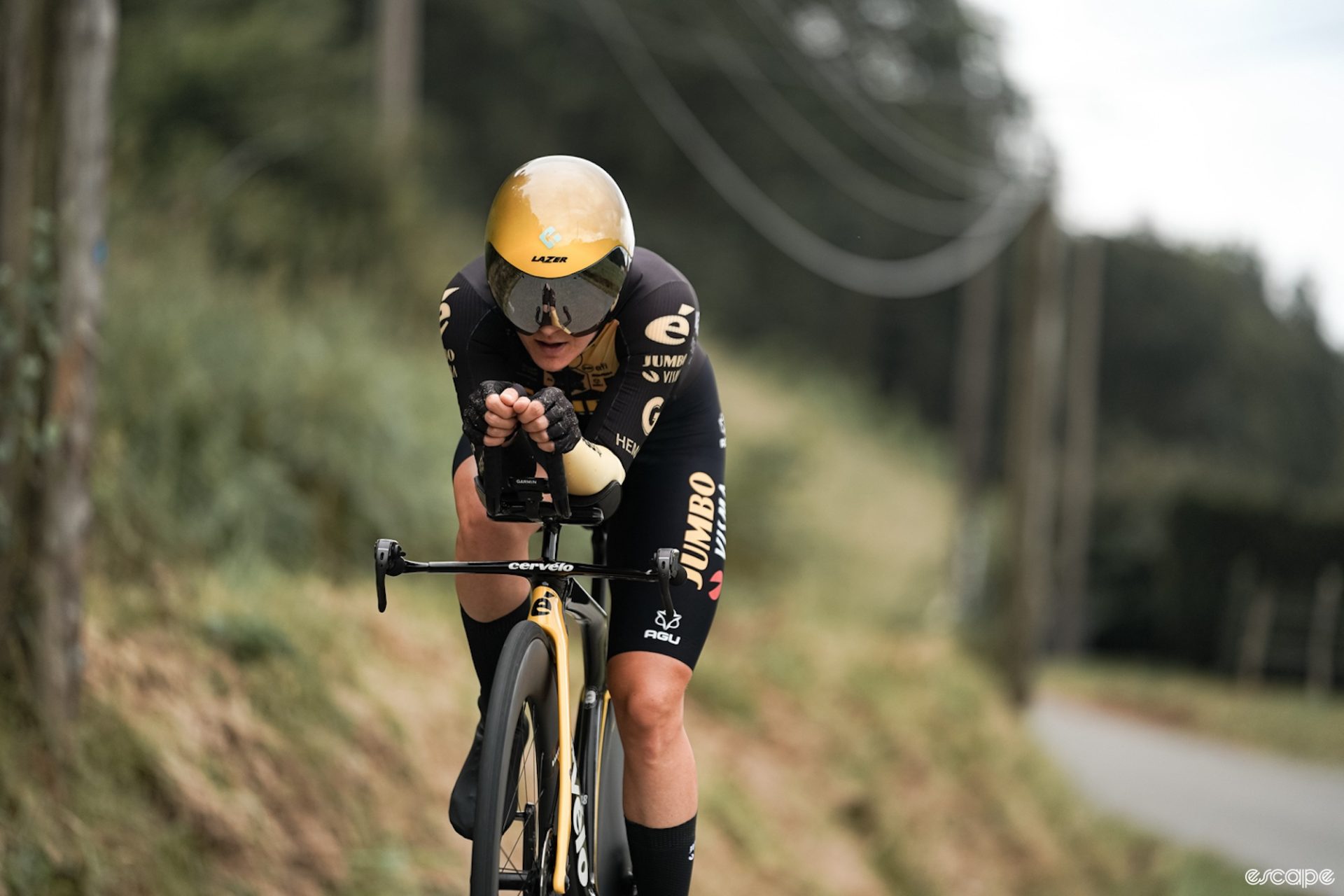
Equipment
Of course, I couldn't write a time trial article without discussing TT equipment. This one is a little different, though, because rather than investigating the latest aero hacks, the question here is how mechanics will scale the double-day hurdle.
Team Uno-X Mobility mechanic Mike Jenner told Escape Collective the team had been working on the logistical elements of the split-day plan for four or five weeks. The team will have an extra mechanic, for a total of four, and an extra van on the race specifically for the split day.
Those mechanics have had the time trial bikes on site since the team arrived at the Tour last Thursday, and riders trained on them in the days before the Tour kicked off. Those TT bikes were then prepped for the time trial the evening before stage one, and packed into a van ready for time trial day. Valentine Omont, lead mechanic at Liv AlUla Jayco , reiterated that TT days are "always the longest days" and confirmed their team took a similar approach in having all the TT bikes prepped before stage one even commenced.
So far, so straightforward. Things get a little more complicated come the day, though. The team’s kitchen truck will leave in the morning ahead of stage 2 to go directly to that evening's new accommodation. (Oh yeah, did we mention that all the teams also have a hotel transfer after the time trial?) The kitchen truck will also take all the staff luggage to the next hotel. Meanwhile, the team will send its team bus, race truck, and two vans to the TT start/holding area while the road stage is ongoing.
Post-road stage, a second team van will take all the riders' luggage to the new hotel to prep the rooms for that night while everyone else transfers to the TT holding area. Here, the four mechanics will set up the warm-up areas, take the bikes for UCI checks, follow each rider in team cars, and generally be run off their feet. TT day is generally all hands on deck for the entire support crew, and soigneurs will see to riders' recovery and fuelling needs, while any spare hands will drive behind less TT-focused riders or ferry people to and from various locations.
As the TT wraps up, the Liv team and road bikes head on to that next hotel, while all the time trial-specific equipment will then be loaded onto the remaining team van at the start area and sent back to the team service course near Kortrijk, Belgium.
All that considered, it’s hardly surprising the general consensus, especially among the riders, is one of displeasure at the Tour de France, including a double day: “The women deserve better” Cofidis' Sarah Roy told Escape Collective, also referencing the UCI regulation that prohibits double days at the WorldTour level.
Olympic Time Trial Champion Grace Brown (FDJ-Suez) would also prefer to have had two separate days. "The road stage is hardly a road stage with the length it is," she said, implicitly raising a question many might have about the value of two half stages. In banning them at the WorldTour level, the UCI broadly seem to agree, although they've granted an exception here. But with the extra stress and pressures it lumps on teams and riders, many in the sport are hoping this isn’t the beginning of a trend.
Did we do a good job with this story?

